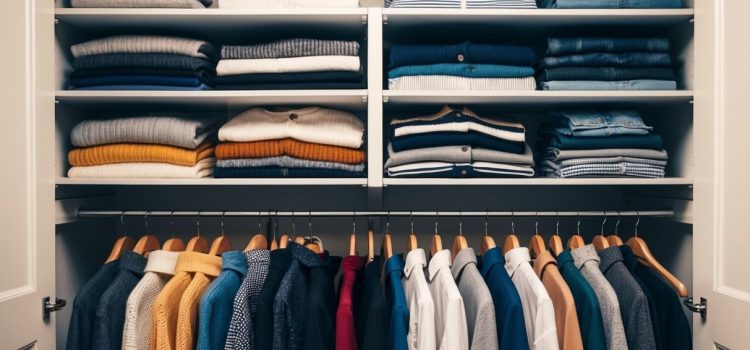
Shopping online has become increasingly popular, offering convenience and a wide array of products. For consumers looking to save money, many online stores provide frequent discounts that can significantly lower the overall cost of purchases. This trend not only helps customers find great deals but also encourages savvy shopping habits.

Several retailers stand out for their consistent pricing strategies and promotions. Websites often feature seasonal sales, clearance events, and loyalty programs that provide additional savings. By staying updated on these offers, savvy shoppers can maximize their spending power and get the most value for their money.
In addition to regular discounts, many of these stores offer exclusive promotions for newsletters or app users. This creates opportunities for consumers to access deals before they become widely available. Understanding which online stores prioritize frequent discounts opens up a world of possibilities for those looking to shop smart and save.
Understanding Discount Strategies in Online Stores
Online stores employ various discount strategies to attract and retain customers. These methods can significantly influence purchasing decisions and encourage customer loyalty. Key strategies include seasonal sales, flash promotions, and loyalty programs.
Seasonal and Clearance Sales
Seasonal sales coincide with holidays or specific times of the year, such as Black Friday or back-to-school season. These promotions often offer substantial discounts on relevant products. For retailers, it is an effective way to boost sales while clearing out seasonal inventory.
Clearance sales focus on selling remaining stock to make way for new items. Discounts can reach up to 70% during these events. Customers looking for bargains are often drawn to these sales, increasing traffic to the store and facilitating quicker inventory turnover.
Flash Sales and Limited-Time Offers
Flash sales create urgency by offering significant discounts for a very short period. Typically lasting a few hours or days, these events encourage quick purchasing decisions. Flash sales can double as marketing strategies by drawing attention to new products or features.
Limited-time offers highlight specific products or categories, often with smaller discounts, but promote a sense of urgency. Customers are incentivized to act quickly to secure the deal. Time-sensitive promotions are effective in generating excitement and increasing conversion rates.
Loyalty Programs and Member Discounts
Loyalty programs reward repeat customers with exclusive discounts and promotions. This strategy helps build a long-term relationship with customers. The programs often include tiered benefits, where customers receive greater discounts as they spend more over time.
Member discounts provide additional savings for customers who register for newsletters or loyalty programs. These discounts can include percentage-off coupons or special pricing on select items. By encouraging memberships, online stores enhance customer retention and increase lifetime value.
Popular Online Stores with Frequent Discounts

Many online stores regularly offer discounts to attract customers and maintain competitive pricing. Shoppers can find great deals across a variety of categories, making it easier to save money while shopping.
Multi-Category Marketplaces
Multi-category marketplaces provide a wide range of products, making them popular for frequent discounts. Websites like Amazon and eBay regularly feature sales events and discounts on diverse items, from household goods to electronics.
These platforms often have flash sales and special promotions, especially during holiday seasons. Walmart also offers frequent discounts on various product categories, including grocery items and home essentials.
Subscribers to their newsletters can receive notifications about upcoming sales and exclusive promotions. This can lead to significant savings throughout the year.
Fashion and Apparel Retailers
Online fashion retailers often utilize discounts to attract buyers. Stores like Zalando and ASOS frequently run promotions and seasonal sales.
They offer students and members additional discounts through loyalty programs. Nordstrom Rack and Tyler’s are known for periodic clearance events, allowing shoppers to find stylish clothing at reduced prices.
Shoppers should also look out for end-of-season sales, which often yield the largest discounts. Email newsletters can also keep customers informed about special sales.
Electronics and Technology Vendors
Electronics vendors frequently offer discounts to remain competitive. Websites like Best Buy and Newegg regularly promote sales on various tech products, including laptops and smartphones.
Monthly clearance events are common, especially during major shopping holidays, such as Black Friday and Cyber Monday.
B&H and Adorama offer frequent promotions on photography and tech gear, appealing to photography enthusiasts.
Utilizing these sales can help shoppers save significantly on higher-priced electronics. Signing up for promotional alerts can also lead to exclusive deals and early access to sales.
Tips for Finding the Best Deals
Finding the best deals online requires strategic approaches. By utilizing the right tools and resources, one can easily secure frequent discounts.
Newsletter Subscriptions and Alerts
Many online stores offer exclusive discounts to subscribers. Signing up for newsletters can provide access to promotions before they are available to the general public.
To maximize this benefit, shoppers should:
- Check for welcome offers, often providing significant first-purchase discounts.
- Monitor emails for flash sales or seasonal offers, which are frequently announced via newsletters.
- Adjust preferences to receive alerts about specific products or categories of interest.
This tailored approach ensures that customers do not miss out on valuable deals.
Utilizing Discount Apps and Extensions
Discount applications and browser extensions can streamline the process of finding the best prices. These tools automatically search for and apply coupon codes at checkout.
Popular options include:
- Honey: Automatically finds and applies coupon codes while shopping.
- Rakuten: Provides cashback offers that can enhance savings on various purchases.
Users should install extensions and familiarize themselves with their features. Frequent updates allow these tools to maintain an extensive database of current discounts.
Social Media Follows and Influencer Promotions
Following brands on social media can lead to timely updates on sales and promotional events. Many companies announce exclusive deals through their social channels.
Influencers often collaborate with brands to promote special discount codes. Engaging with these promotions can be beneficial.
To effectively leverage this approach:
- Stay updated on social media platforms like Instagram and Twitter for flash sales.
- Look for influencer posts that may contain unique discount codes, often time-sensitive.
By integrating social media into the shopping strategy, customers enhance their chances of finding exceptional deals.
























Comments
Hello world!
Pic of the week: Sunset at margate beach
The first day’s journey was through the pink fields
The first day’s journey was through the pink fields
The first day’s journey was through the pink fields